How to proceed when diluting the glue?
Consider how to dilute wallpaper glue, for example
In order for him to acquire the necessary qualities, it is important to follow the instructions exactly and do everything correctly.
- The first step is to take a clean and dry container in which the glue will be mixed. It is indicated above that the water should be at room temperature, about 25 degrees, but for your own comfort it is better to increase it to at least 40 degrees. It is undesirable to raise the temperature above 40.
- Now you should take a pack of glue and look at it. It is necessary to accurately pour water, as written in the instructions, since if there is not enough water or vice versa, the glue may not work at all.
- Pour out the glue slowly, slowly, without interrupting stirring. Thanks to such actions, there will be no lumps in the glue.
- You can mix the glue mixture with anything. The main thing is not what to interfere with, but how. This should be done slowly and carefully, until the consistency is uniform.

Varieties of adhesives for joints
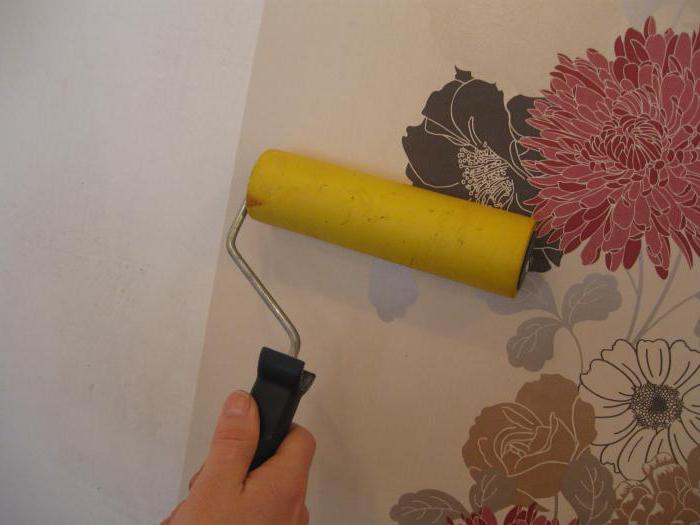
If you want to correct some of the inaccuracies of the wallpaper pasted over, then you should consider several types of compositions. Among others, KLEO STRONG should be highlighted. This mixture is a product that consists of polyvinyl acetate and acrylic dispersions and water. Suitable material for all types of wallpaper. After purchasing it, you can immediately use it, as a result, it will be possible to get high-quality joints that will not be spoiled also for the reason that the glue is transparent.
The composition can be used not only when gluing joints, but also when gluing wallpaper in difficult places, as well as to restore loose areas. Kleo wallpaper joint glue can be purchased for only 190 rubles for 80 g. Another type of the described products is Quelyd Raccord. Its cost is 205 rubles. for 80 g. This ready-to-use adhesive is suitable for vinyl and paper wallpapers and other wall coverings.
You can also use the mixture for gluing borders. For 50 m of surface, 0.08 kg will be needed. If you still cannot choose an adhesive for gluing wallpaper joints, then you can prefer the "Moment" composition. It has a pasty consistency, is easy to apply, has low hygroscopicity and is well adjusted. The composition is characterized by high primary adhesion and versatility. To apply glue, it is necessary to bend the edge of the wallpaper, and then apply the mixture parallel to the joint and distribute it evenly.
At the next stage, the wallpaper is well pressed, and excess glue from the surface of the wallpaper must be removed with a damp cloth. Do not start work if the thermometer drops below +10 ° C. This glue for wallpaper joints is also good in that it has a high adhesive capacity, is versatile and easy to use. After drying, it remains completely transparent. In the process of application, the mixture does not spread, and the convenient nose of the tube eliminates excessive leakage of glue.
How much glue is needed: how to correctly calculate the amount of adhesive
Most people (and even masters) give little thought to this question. The result of this attitude towards buying glue is unspent surplus that is simply thrown away. Let's figure out the required amount. As a rule, the consumption of wallpaper glue depends entirely on the type of wallpaper to be glued and the quality of the preparation of the walls.
With the type of wallpaper, everything is clear - the heavier the wallpaper, the thicker you have to dilute the glue. Accordingly, this increases its consumption. With the preparation of the walls, everything also looks not complicated.Let's face it - if you want to reduce the consumption of this material, then prime the walls two times. This will reduce their ability to absorb moisture and, as a result, require less glue.
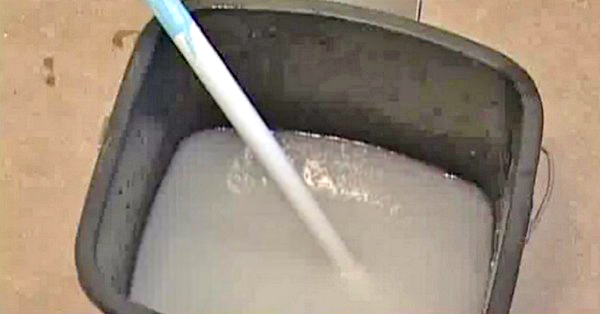
What is the consumption of wallpaper glue
Now about the factory standards - I don't know how they calculate them, but they almost always do not correspond to reality. This is most likely because some of the glue goes to waste, flowing down the walls. For myself, I have derived my consumption rates. From one pack, I get a 12-liter bucket of glue, which is enough for me to wallpaper walls with an area of about 40 square meters.
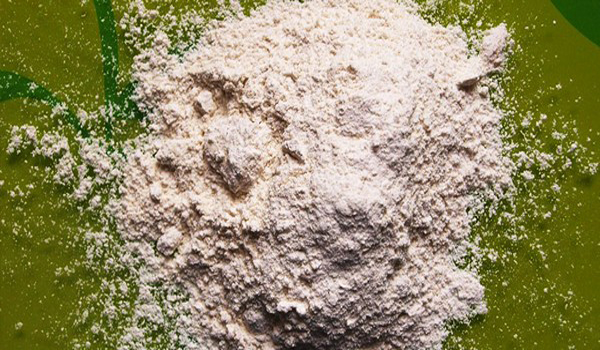
Wallpaper glue photo
Tips & Tricks
When choosing and buying glue for finishing work, you should consider a few tips to avoid basic mistakes. The most reliable solution is carboxymethyl cellulose, but it is only suitable for plastered surfaces.
It is better to cover painted walls with methylcellulose-based glue with the addition of polyvinyl acetate. If you plan to use heavy paper or textile wallpaper, then the amount of polyvinyl acetate should exceed 50%.
For light wallpaper, it is worth choosing a solution with an acidity index of at least 8. Otherwise, the finished solution may leave yellow spots on the surface of the material. High-quality glue dries for 18-20 seconds and becomes transparent, after which it takes time to completely dry. When carrying out repairs in rooms with high humidity, it is recommended to use substances with special antiseptic additives that provide protection against the development of mold and mildew.
p> Share link:
General description and purpose
CMC glue is produced at chemical plants on the basis of cellulose. If you decipher the abbreviation CMC itself, you get the word - carboxymethyl cellulose. In addition to the cellulose processing product, the glue contains anti-caking agents and antifungal agents. All components, although they are of synthetic origin, do not harm health.
CMC is intended for gluing various types of wallpaper to any surface (concrete, with plaster, wood). Several types of glue are produced. They differ in the percentage of sodium salt of carboxymethyl cellulose (the higher this indicator, the greater the adhesive ability of the glue).
CMC is mixed into cement mixtures and gypsum fillers to increase their strength. This product is used in various industrial sectors. The glue looks like a free-flowing powdery white powder. If the CMC has a yellow color, it means that the product has expired long ago.
CMC is the most demanded product for repair, and all thanks to its ease of use and low cost. Before use, the glue is diluted with water at the dosage indicated in the instructions. Then it is left to swell (depending on the type of CMC) for 15 minutes or 2-3 hours. The finished mixture resembles a colorless, gelatinous, viscous mass. The solution never forms clots or lumps, has no smell, does not leave yellowish streaks on the wallpaper. The pot life of a 4% mixture is as much as seven days.
Issue price
The cost of the glue will depend on its quality, type and manufacturer. Wallpaper glue of foreign production traditionally costs an order of magnitude more expensive than domestic. We have selected the most popular and widespread wallpaper adhesives in our country and compared their cost:

The basic principle: the cheapest adhesives are for paper wallpapers, the most expensive ones are for glass fabrics. Heavy packages are more economical. If you need to wallpaper a large enough area, it is more profitable to buy a package weighing 500 grams than two - 250 grams each.
Some people still believe that since starch is the basis of wallpaper glue, you can not buy ready-made mixtures at all, but make the paste yourself.For these thrifty homeowners, here's a simple recipe for homemade wallpaper glue.
For 10 liters of finished paste, you will need about 1 kilogram of ordinary rye or wheat flour or flour dust and any starch, for example, corn, potato or maize. Pre-sifted flour and starch through a sieve should be diluted with water to the consistency of thick sour cream, stirring constantly - the risk of lumps appearing is very high. Then the paste is brewed, that is, brought to a boil. To increase the adhesive power, some people advise adding wood glue to the paste, but it can cause yellow spots on the wallpaper. Therefore, it is better to use about 100 grams of regular PVA. To prevent the paste under the wallpaper from rotting, you can also add 50 grams of alum or 25 grams of 0.25% carbolic acid per 10 liters of paste.

Remember that it is difficult to guess the consistency and the amount of PVA required for reliable adhesion. The paste is stored for a very short time - it possesses the best adhesive properties immediately after brewing and cooling. Homemade wallpaper glue can come in handy if you have not calculated the amount of the purchased one, but you want to glue the wallpaper right now. In other cases, frankly speaking, it is impractical - spend a lot of time, and taking into account the affordable cost of the finished glue, you will not save so much.
Useful Tips
Prepare everything you may need in advance:
- a clean container, preferably about 10 liters in volume;
- water at room temperature;
- stirring spatula, measuring spoon;
- drill, mixer.
- We start preparing the glue and observe the proportions indicated on the package.
- Stirring the water with a stick, pour the required amount of powder in a thin stream. Then we connect a drill or a regular mixer and achieve an even consistency, without a single lump.
- We always breed only one half of the box. Then, if necessary, a second one. It is better to add glue in the first half hour, then it will swell, it will be difficult to stir it evenly, and clots will remain in the water that you do not need.
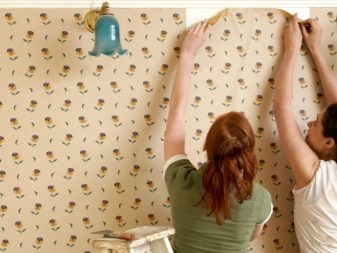
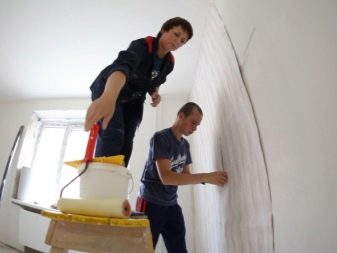
- There is a little trick when diluting the glue. Use only one mixer attachment. With its help, the mixture is evenly stirred and nothing will fly around the container.
- When the glue is completely ready, leave it on for 15-20 minutes so that it swells well.
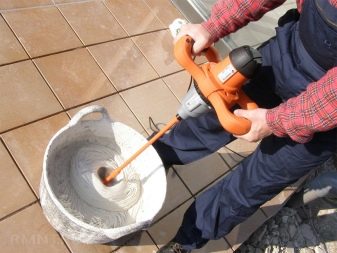
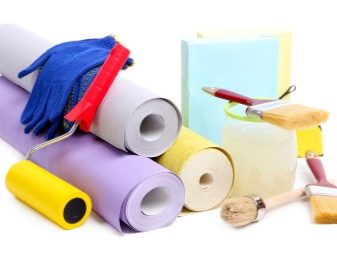
Wallpaper glue Methylane, a small overview
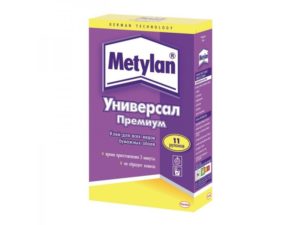
- Glue
- Advantages and disadvantages
- Range
- Reviews
Henkel is known in Russia for its adhesive products. She has been present in our construction market for over 15 years and represents the Moment, Econ and Methylan trade brands.
This wallpaper glue is perhaps one of the most popular in our country.
Today we will talk about the wallpaper glue Methylane, which occupies the premium segment of the construction adhesives market. This adhesive is recommended in many TV shows because it is suitable for paper, vinyl and non-woven wallpapers.
Glue
Methylane is produced in Germany, where, under the watchful eye of engineers, finished raw materials are produced. The constant introduction of new technologies allows you to keep the brand and regularly improve the quality of products by adding new functionality.
Further, the raw materials are loaded into large containers and sent to us. Metylan is packaged already in the Russian Federation, in the city of Tosno, it is here that a special processing plant was built for this.
A very laconic motto, not devoid of bragging.
Wallpaper glue of the Methylane brand is produced in a wide range, with its help it is easy to glue wallpapers of various types to the wall: paper, vinyl, non-woven, glass wallpaper. Many wallpaper manufacturers speak well of this adhesive composition and even recommend it to consumers.
Methylane glue has earned such confidence, of course, for its quality, high and constant, as well as a wide range of other various advantages.
Advantages and disadvantages
Let's go straight to listing the advantages of the glue.
Well-designed packaging, which indicates the composition, consumption, instructions for use, recommendations for gluing wallpaper are given. Professional craftsmen say that the consumption of glue is precisely verified, which distinguishes Metylan glue from analogues.
Basic composition for the simplest type of wallpaper
Inside the box, the glue is sealed in a bag. The adhesive composition is a homogeneous friable powder, which must later be diluted with water. This powder is created on the basis of a special, modified starch with various additives to fight fungus and mold.
When diluted with water, no clots or lumps are formed, the main thing is to pour the glue calmly, gently stirring the solution. It is advisable to dilute a sufficient amount of adhesive at once.
Two solutions are available for popular wallpaper
The glue does not need to settle for a long time, 3-5 minutes is enough and the composition is ready to work, a very good indicator for a professional adhesive composition. For non-woven wallpaper, the composition takes a little longer, but also very quickly.
Methylane brand glue for paper, vinyl, non-woven and other wallpaper has no smell, even when diluted and applied to wallpaper or a wall.
Methylane is available in most types of indicator adhesives. The indicator is called the pink color of the glue. As you probably already guessed, this is done so that you do not leave dry spots on the wallpaper
Wallpaper gluing with such glue is carried out in a better quality, which is especially important when gluing vinyl wallpaper.
There are several solutions for the most popular wallpapers.
As soon as the glue is ready to work, it becomes transparent, now you can glue the canvases on the wall.
Wallpaper glue interacts well with the wall, it immediately grabs the wallpaper, but makes it possible to align it, compare the pattern
When gluing non-woven wallpaper, this is a prerequisite, because the canvas itself is not smeared, but even when gluing smeared paper or vinyl canvases, this property of the adhesive is very important
Rare but very specific wallpapers require special attention
The disadvantages of Methylane glue are as follows:
- the cost of wallpaper glue Methylane is quite high, not everyone will choose it, despite the fame and quality;
- the glue dries quickly enough on the wall, so non-professionals should always be on the alert, and do everything in some haste;
- the shelf life is only two years, although for such dry mixtures, the warranty is most often 5 years.
Range
You can find various types of Metylan on store shelves:
This is what the entire line of wallpaper glue looks like.
- Methylane station wagon premium, best suited for various paper wallpapers;
- Methylane vinyl premium, specializes in vinyl cloths, glue heavy vinyl wallpaper with it very much;
- Methylane non-woven (ultra and express premium), suitable for pasting heavy wallpaper on a non-woven backing;
- Methylane fiberglass premium, produced for pasting walls with fiberglass;
- Methylane ovalite t, is produced not in dry, but in liquid form, it is used for gluing heavy wallpaper.
As you can see, any type of wallpaper has its own Methylane glue, so do not experiment, take the desired composition.
Reasons for the discrepancy between wallpaper canvases

In order to know how to eliminate the likelihood of a discrepancy in wallpaper canvases even before the start of repairs, you need to familiarize yourself with the main causes of this problem. This is a challenge that DIYers usually face when wallpaper glue does not match the thickness and material of the wallpaper being used. The canvases can be too thick or heavy, and this also applies to vinyl double layer material. Quite often, the canvases diverge if the following types of wallpaper are used during the repair:
- fiberglass;
- non-woven;
- on a textile basis.
They require the use of a highly adhesive adhesive.
Methylane glue for non-woven wallpaper: Instructions for the correct preparation and use of Metylan + glue from the masters
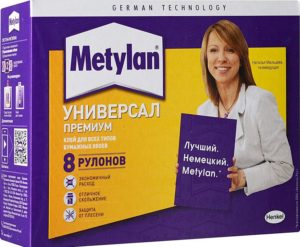
A lot of apartment and house owners are faced with the presence of mold and mildew on the walls. This problem can be solved by constant washing of the walls or using glue for non-woven wallpaper.
Methylan adhesives contain components that help prevent the appearance of mold and mildew even in places where condensation occurs.
Pros of Methylane Wallpaper Adhesive
Glue "Methylan" has the following positive qualities:
- Glues well;
- It is easy to apply;
- Glue "Methylan" for non-woven wallpaper does not contain harmful substances that can be harmful to human health;
- Easy to breed. The mixture is obtained without lumps;
- When dry, it does not leave streaks and stains on the surface;
- Economical;
- Does not react with paint;
- The shelf life of the finished glue is about ten days.
And this suggests that even a person who does not have experience in wallpapering can use this glue. The glue has such a composition that when gluing wallpaper, it does not set immediately and therefore, if non-woven wallpaper is incorrectly glued, everything can be fixed. By the way, the glue must be diluted within ten minutes.
Properties
Glue "Methylan" is suitable for different types of non-woven wallpaper, and for this reason it is used by many owners of apartments and houses. If you look at the composition of the glue, you will find that it does not contain components that can harm human health.
The glue mixture contains mainly two components:
- Simple resin and
- methylcellulose.
Resin is a natural material and therefore cannot harm the human body. Methyl cellulose is a synthetic material, but it also does not have a negative impact on human health. This ingredient does not react with concrete and therefore non-woven wallpaper glue is used for finishing:
- Kindergarten premises;
- Flats for people with poor health;
- For children's rooms.
Price
The price of "Methylan" glue is not budgetary, but it is worth buying, because its composition is superior to all cheap glue mixtures. The consistency of "Methylane" depends on the type of wallpaper selected.
For example, ten kilograms of adhesive mixture, which was obtained from eight hundred grams of dry product, is enough for sixty-six square meters of non-woven wallpaper, seventy-five square meters of structured and fifty square meters of fiberglass wallpaper.
If you apply glue to the surface with a brush, then its consumption will be large, and the consumption of glue also depends on the surface itself. For example, if the walls are not primed, then the glue consumption will be high. To paste over the walls with high quality, you must first prepare them. To do this, the walls must first be leveled, then putty and the final stage in the preparation of the walls is the primer.
Before gluing the wallpaper, it is necessary to inspect the walls, they should not have greasy stains, otherwise, over time, they may appear on the wallpaper. In the event that you will glue wallpaper for painting, you must wait until the wallpaper is completely dry. If a large amount of work is planned, then it is necessary to buy large packs of glue mixture.
conclusions
Methylane and Pufas products also have similarities in that no lumps are formed when the dry mixture and water are stirred. This reduces the stirring time of the mixture.
Consumption of Pufas glue is almost the same as that of Methylan glue, but Methylane, unlike other brands of glue, is used for different types of wallpaper.
But Pufas mixtures are divided into several types, it depends on what materials they are intended for. In this article, we told you about Methylan glue for non-woven wallpaper and we hope that this information will be useful to you.
Wallpaper glue: varieties and purpose
There are only three main types of wallpaper glue - a paper-based light wallpaper glue, a heavy wallpaper glue, and a universal glue that is equally suitable for both heavy and light wallpapers. In addition, glue for non-woven wallpaper and glass wallpaper is distinguished into a separate group of wallpaper glue. Now let's talk in more detail about all these types and their purpose.
- Adhesive for light paper-based wallpaper - it can be called highly specialized, since it cannot cope with other types of wallpaper. To be honest, this glue is practically not available anymore - instead, professional finishers use a universal glue prepared accordingly.
-
Adhesive for heavy types of wallpaper - it is based on the well-known PVA glue. When it comes to gluing vinyl wallpaper, then this is the glue you need. Many manufacturers also sign these products - for example, the manufacturers Quelyd and Metylan simply call it Vinyl. This glue can also be used to glue a light type of paper-backed wallpaper. True, it is irrational to use it in this way, since it is the most expensive type of wallpaper glue.
- Universal wallpaper glue. According to the manufacturer, it can be used to stick almost any wallpaper. There is one "but" here - as you know, there are no completely universal building materials. The same is true with this glue. It turns out that universal wallpaper glue has a median selection of components that glue some types of wallpaper a little better, and others a little worse. It can be used for light wallpapers, stretched for non-woven wallpapers and similarly for vinyl wallpapers. Again, it all depends on how you prepare this glue. In my opinion, it is better to use specialized glue, the composition of which is thoroughly selected for this or that type of wallpaper.
- Wallpaper glue for non-woven wallpaper - brands "Metylan" and "Quelyd" so it is marked "Fliz". Why do I mention these brands of glue so often? It's simple - today these are the most high-quality and inexpensive products of this type - they skillfully combine the best price and good quality. Adhesive for non-woven wallpaper is highly specialized - in addition to the wallpaper for which it is intended, it can only be used to glue light wallpaper on a paper basis.
- Adhesive for glass wallpaper - as a rule, it is a dispersion adhesive with increased characteristics. It is used not only for fiberglass - it also holds well fabric wallpaper, more commonly known as textile wallpaper. You should know that the wallpaper glued with such compositions cannot be removed from the walls just like that - you will need special solvents.
In addition, there is a very interesting type of glue called "indicator". With the help of special coloring additives, it is given a light pink tint, which allows you to control the uniformity of spreading the wall or canvas. This dye does not bleed through the wallpaper and does not leave stains. During the drying process, it is simply neutralized.

Adhesive wallpaper indicator photo
Cooking algorithm
Wallpaper glue is produced today in the form of a kind of flakes, which swell when mixed with water and form a mixture like a gel or jelly.
The glue preparation technology consists of the following sequential actions:
- First of all, you need to measure the required amount of clean water. Sometimes experts recommend using a lukewarm liquid, as the mixture can dissolve better in it.
- After that, the required volume of solution is measured. For this, it is advisable to use a measuring cup in order to maintain all proportions.
Before diluting the glue with water, it is advisable to make rotational movements with a stick to make the liquid move to one side. After that, in small portions, the flakes are poured into the container.
At the same time, it is important to constantly rotate the stick to prevent the glue from sticking together.
When the flakes have all dissolved and a gel has begun to form, you can stop stirring the mixture. After that, it is left for 5-15 minutes.
This is necessary so that the remaining components can swell and acquire the desired consistency.
At the end of the preparation, you can apply the solution to the wallpaper or to the wall.
Please note that it is not advisable to store the mixture for a long time, as it will lose its properties. Therefore, try to calculate as accurately as possible the required amount of the required volume of adhesive.
How much is stored diluted
Often in the process of finishing and repair work, situations arise when there is much more glue than was needed. For this reason, the question arises as to how long it is allowed to store the prepared solution.
When purchasing an adhesive composition in a dry state, it is important to always pay attention to the production date, which is indicated on the package. You should not buy a substance that has reached the end of its shelf life, as its characteristics and storage capacity are significantly impaired.
The diluted solution is able to stand for 7-10 days, subject to a number of conditions. Including, it is required:
- low ambient temperature, but not below 0 degrees;
- finding the solution in a tightly or hermetically sealed container;
- the absence of foreign objects inside the container with a mixture, including rollers and brushes.
Stir thoroughly before reusing wallpaper glue. Do not add a new solution to the remaining mixture, and especially products from other manufacturers with a different composition.
When stored at standard room temperature (within 18-24 degrees), the diluted glue can be used for no more than one week. It should be understood that the specific storage duration directly depends on the manufacturer and composition. In any case, it is not recommended to use a solution diluted more than a week ago. Also, use should be discarded in the event of a pungent unpleasant odor.
You can notice the damage to the glue by the changed consistency - the water will peel off from the main composition, and the solution itself will thicken in the form of flakes or lumps. If, after long-term storage, the solution has become too liquid, then it is pointless to use it for work, since the wallpaper will not stick to the walls.
The best option is to dilute the composition for pasting walls in the required minimum amount. In this case, it will always be possible to use a freshly prepared solution with high characteristics. If the glue is already diluted and it becomes necessary to postpone the repair work for a short time, it is enough to tightly cover the solution under cling film, and stir well before applying. It is not necessary to remove the glue for several hours in a cool place. This recommendation is also relevant when leaving the solution for a night break.
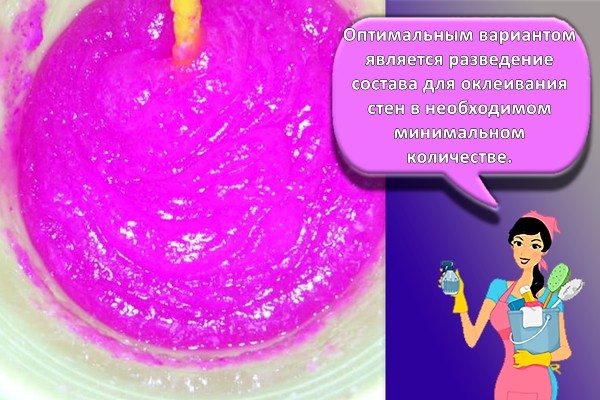
Cleo wallpaper glue is a good alternative to Methylane
CLEO can be used for vinyl, textile, non-woven and fiberglass wallpapers. It is easy to apply, allows you to move the canvas over the surface, combining the pattern, does not leave stains, contains special additives that prevent the appearance of mold. Cleo's glue for non-woven wallpaper is applied only to the wall, the canvases remain dry. Thanks to this, you can dock the drawing with maximum accuracy. Non-woven wallpaper does not deform during the gluing process, and during subsequent repairs, only their top layer can be removed.
The base remaining on the wall forms a flat surface. Wallpaper with a non-woven base mask well the cracks that have appeared on the wall. They can be glued to absolutely all materials.
Instructions for use:
- It is very easy to prepare it: pour the required amount of water into a basin or bucket, add a dry mixture.
- After five minutes, stir the glue thoroughly until a homogeneous mass is formed.
- Using a roller or brush, apply it to the wall and apply the first canvas, smoothing it with a dry cloth and removing any air bubbles.
- Remove excess with a clean sponge dipped in water.
- The next canvas is glued end-to-end.
- Painting can be done two hours after gluing.
The price of the glue is higher than the usual Russian means intended for pasting walls with roll materials, but it is fully justified by its impeccable quality. And the finished result will delight you with its beauty for a long time.
The author of the article is Kristina Sekushina
The hallmarks of a good glue
A high-quality adhesive solution affects the result of the work performed and the strength of fixing the wallpaper on the walls. Having decided on the required type of glue, you should familiarize yourself with its detailed characteristics in order to choose the right quality products. Most buyers simply prefer the glue produced by renowned manufacturers, but it is better to use an integrated approach.
Environmental friendliness
The absence of harmful components in the composition of the product affects the safety for the environment and human health. If chemical impurities have been used for the production of glue, it can be harmful, therefore, when working, you will need to wear a protective mask so as not to inhale corrosive substances. As a rule, most manufacturers that produce environmentally friendly solutions indicate on the packaging the corresponding marking in the form of a green icon.
Hygiene
The hygiene indicator is in many ways similar and is associated with the environmental friendliness of the product. The criterion of hygiene is determined taking into account the composition of the glue, the absence of a strong odor and human exposure. The substance with good hygiene is characterized by a mild odor and non-toxicity.
PH indicator
The acid-base pH is needed to determine the likelihood of yellow spots, which is especially important when using wallpaper made in light colors. To prevent stains from appearing on the material, the substance must have a neutral acidity index. It is recommended to choose an adhesive with a pH in the range of 6-7, regardless of the type of surface to be treated.
Primary adhesion
Initial adhesion, which is determined by the strength of adhesion, expresses the strength of the bond between the wallpaper and the base at the moment when the glue has not yet dried and formed a hard layer. At this stage of gluing the wallpaper, adjustments are made to align the patterns and seams evenly. The role of primary adhesion is only to fix the wallpaper to the surface until the final adhesion occurs. The indicator depends solely on the consistency and viscosity of the glue and is not related to the composition and type of raw materials used for production.
Final adhesion
The final adhesion of the substance determines the strength of the bonding of the wallpaper to the surface after the glue is completely dry. The indicator depends on the ability of the adhesive to interact with mineral materials, including cement, lime, chalk, gypsum, as well as paper and other types of substrates used in wallpaper. The final adhesion is influenced by the composition of the adhesive, the type of substrate and wallpaper.
Water resistance
Water resistance determines the adhesive's ability not to soften when the atmosphere is too humid. Use a waterproof product when performing repair and finishing work in the bathroom, kitchen and industrial premises.
Compatibility
The compatibility of the adhesive with other materials allows you to mix different substances without mutual degradation of characteristics. The compatibility index depends on the type of surface to be treated and the constituent components of the adhesive. When choosing a substance, you need to know exactly on which surface the work will be carried out in order to select the appropriate glue.
Durability
The duration of fixing the wallpaper on the surface depends on the indicator of the long-term gluing. Modern adhesive solutions are able to hold the coating for many years, but in the case of using low-quality raw materials, the wallpaper begins to peel off the walls.
Conclusion
Wallpaper can be pulled apart if the surface is not properly prepared. This problem is observed in cases where a layer of finishing putty has not been applied to the wall area. This is especially true for mineral rough surfaces.
Sometimes this difficulty arises when the surface has not been sanded or, after filling, has not been treated with a penetrating primer. Be that as it may, you can fix the problem yourself by using a special glue for joints. It comes in small tubes so you don't have to overpay.
